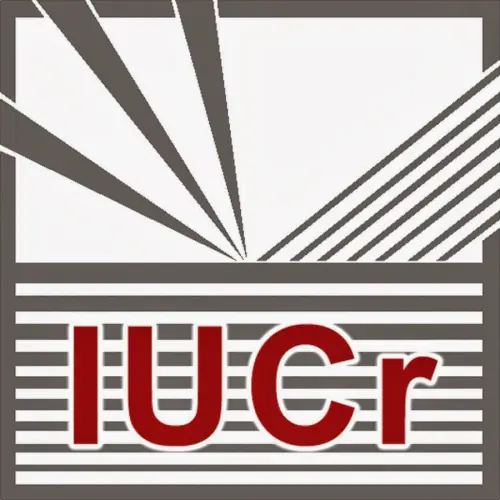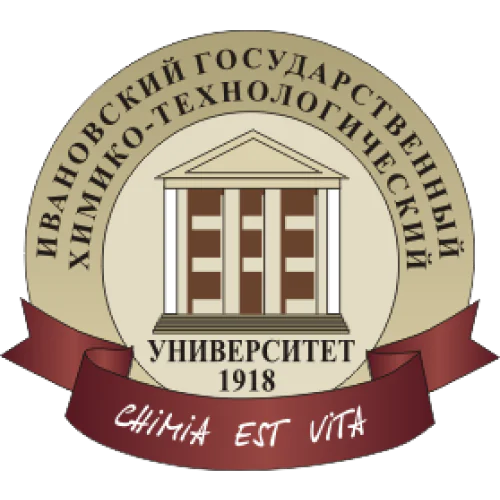Journal of the American Chemical Society, volume 132, issue 16, pages 5827-5836
A calix[4]arene strapped calix[4]pyrrole: an ion-pair receptor displaying three different cesium cation recognition modes.
Kim Sung Kuk
1
,
Sessler Jonathan
1
,
Gross Dustin E.
1
,
Lee Chang Hee
1
,
Kim Jong S.
1
,
LYNCH VINCENT
1
,
Delmau L. H.
1
,
Hay Benjamin P
1
1
Department of Chemistry and Biochemistry, 1 University Station-A5300, The University of Texas at Austin, Austin, Texas 78712-0165, Department of Chemistry, Kangwon National University, Chun-Chon 200-701, Korea, Department of Chemistry, Korea University, Seoul 136-701, Korea, and Chemical Sciences Division, Oak Ridge National Laboratory, Oak Ridge, Tennessee 37830-6119
|
Publication type: Journal Article
Publication date: 2010-04-01
Quartile SCImago
Q1
Quartile WOS
Q1
Impact factor: 15
ISSN: 00027863, 15205126
General Chemistry
Catalysis
Biochemistry
Colloid and Surface Chemistry
Abstract
An ion-pair receptor, the calix[4]pyrrole-calix[4]arene pseudodimer 2, bearing a strong anion-recognition site but not a weak cation-recognition site, has been synthesized and characterized by standard spectroscopic means and via single-crystal X-ray diffraction analysis. In 10% CD(3)OD in CDCl(3) (v/v), this new receptor binds neither the Cs(+) cation nor the F(-) anion when exposed to these species in the presence of other counterions; however, it forms a stable 1:1 solvent-separated CsF complex when exposed to these two ions in concert with one another in this same solvent mixture. In contrast to what is seen in the case of a previously reported crown ether "strapped" calixarene-calixpyrrole ion-pair receptor 1 (J. Am. Chem. Soc. 2008, 130, 13162-13166), where Cs(+) cation recognition takes place within the crown, in 2.CsF cation recognition takes place within the receptor cavity itself, as inferred from both single-crystal X-ray diffraction analyses and (1)H NMR spectroscopic studies. This binding mode is supported by calculations carried out using the MMFF94 force field model. In 10% CD(3)OD in CDCl(3) (v/v), receptor 2 shows selectivity for CsF over the Cs(+) salts of Cl(-), Br(-), and NO(3)(-) but will bind these other cesium salts in the absence of fluoride, both in solution and in the solid state. In the case of CsCl, an unprecedented 2:2 complex is observed in the solid state that is characterized by two different ion-pair binding modes. One of these consists of a contact ion pair with the cesium cation and chloride anion both being bound within the central binding pocket and in direct contact with one another. The other mode involves a chloride anion bound to the pyrrole NH protons of a calixpyrrole subunit and a cesium cation sandwiched between two cone shaped calix[4]pyrroles originating from separate receptor units. In contrast to what is seen for CsF and CsCl, single-crystal X-ray structural analyses and (1)H NMR spectroscopic studies reveal that receptor 2 forms a 1:1 complex with CsNO(3), with the ions bound in the form of a contact ion pair. Thus, depending on the counteranion, receptor 2 is able to stabilize three different ion-pair binding modes with Cs(+), namely solvent-bridged, contact, and host-separated.
Citations by journals
|
2
4
6
8
10
12
14
16
|
|
|
Chemical Communications

|

Chemical Communications
15 publications, 9.8%
|
|
Organic Letters

|

Organic Letters
10 publications, 6.54%
|
|
RSC Advances

|

RSC Advances
8 publications, 5.23%
|
|
Journal of the American Chemical Society

|

Journal of the American Chemical Society
7 publications, 4.58%
|
|
Chemistry - A European Journal

|

Chemistry - A European Journal
6 publications, 3.92%
|
|
Chemistry - An Asian Journal

|

Chemistry - An Asian Journal
5 publications, 3.27%
|
|
Chemical Science

|

Chemical Science
5 publications, 3.27%
|
|
Tetrahedron Letters

|

Tetrahedron Letters
4 publications, 2.61%
|
|
Chemical Society Reviews

|

Chemical Society Reviews
4 publications, 2.61%
|
|
Dalton Transactions

|

Dalton Transactions
4 publications, 2.61%
|
|
New Journal of Chemistry

|

New Journal of Chemistry
4 publications, 2.61%
|
|
European Journal of Organic Chemistry

|

European Journal of Organic Chemistry
3 publications, 1.96%
|
|
Inorganic Chemistry

|

Inorganic Chemistry
3 publications, 1.96%
|
|
Supramolecular Chemistry

|

Supramolecular Chemistry
3 publications, 1.96%
|
|
Chemical Reviews

|

Chemical Reviews
2 publications, 1.31%
|
|
Sensors and Actuators, B: Chemical

|

Sensors and Actuators, B: Chemical
2 publications, 1.31%
|
|
ChemPhysChem

|

ChemPhysChem
2 publications, 1.31%
|
|
Angewandte Chemie - International Edition

|

Angewandte Chemie - International Edition
2 publications, 1.31%
|
|
Angewandte Chemie

|

Angewandte Chemie
2 publications, 1.31%
|
|
Journal of Physical Chemistry B

|

Journal of Physical Chemistry B
2 publications, 1.31%
|
|
Organometallics

|

Organometallics
2 publications, 1.31%
|
|
Journal of Physical Chemistry Letters

|

Journal of Physical Chemistry Letters
2 publications, 1.31%
|
|
Journal of Materials Chemistry

|

Journal of Materials Chemistry
2 publications, 1.31%
|
|
Organic and Biomolecular Chemistry

|

Organic and Biomolecular Chemistry
2 publications, 1.31%
|
|
Physical Chemistry Chemical Physics

|

Physical Chemistry Chemical Physics
2 publications, 1.31%
|
|
Journal of Fluorescence

|

Journal of Fluorescence
1 publication, 0.65%
|
|
Organic Chemistry Frontiers

|

Organic Chemistry Frontiers
1 publication, 0.65%
|
|
IUCrJ

|

IUCrJ
1 publication, 0.65%
|
|
Topics in Current Chemistry

|

Topics in Current Chemistry
1 publication, 0.65%
|
|
2
4
6
8
10
12
14
16
|
Citations by publishers
|
10
20
30
40
50
|
|
|
Royal Society of Chemistry (RSC)

|

Royal Society of Chemistry (RSC)
50 publications, 32.68%
|
|
American Chemical Society (ACS)

|

American Chemical Society (ACS)
34 publications, 22.22%
|
|
Wiley

|

Wiley
27 publications, 17.65%
|
|
Elsevier

|

Elsevier
14 publications, 9.15%
|
|
Springer Nature

|

Springer Nature
7 publications, 4.58%
|
|
Taylor & Francis

|

Taylor & Francis
7 publications, 4.58%
|
|
Multidisciplinary Digital Publishing Institute (MDPI)

|

Multidisciplinary Digital Publishing Institute (MDPI)
2 publications, 1.31%
|
|
International Union of Crystallography (IUCr)

|

International Union of Crystallography (IUCr)
1 publication, 0.65%
|
|
American Institute of Physics (AIP)

|

American Institute of Physics (AIP)
1 publication, 0.65%
|
|
Ivanovo State University of Chemistry and Technology

|

Ivanovo State University of Chemistry and Technology
1 publication, 0.65%
|
|
Beilstein-Institut

|

Beilstein-Institut
1 publication, 0.65%
|
|
10
20
30
40
50
|
- We do not take into account publications that without a DOI.
- Statistics recalculated only for publications connected to researchers, organizations and labs registered on the platform.
- Statistics recalculated weekly.
{"yearsCitations":{"type":"bar","data":{"show":true,"labels":[2010,2011,2012,2013,2014,2015,2016,2017,2018,2019,2020,2021,2022,2023,2024],"ids":[0,0,0,0,0,0,0,0,0,0,0,0,0,0,0],"codes":[0,0,0,0,0,0,0,0,0,0,0,0,0,0,0],"imageUrls":["","","","","","","","","","","","","","",""],"datasets":[{"label":"Citations number","data":[7,14,32,14,19,9,11,10,6,5,9,6,4,6,1],"backgroundColor":["#3B82F6","#3B82F6","#3B82F6","#3B82F6","#3B82F6","#3B82F6","#3B82F6","#3B82F6","#3B82F6","#3B82F6","#3B82F6","#3B82F6","#3B82F6","#3B82F6","#3B82F6"],"percentage":["4.58","9.15","20.92","9.15","12.42","5.88","7.19","6.54","3.92","3.27","5.88","3.92","2.61","3.92","0.65"],"barThickness":null}]},"options":{"indexAxis":"x","maintainAspectRatio":true,"scales":{"y":{"ticks":{"precision":0,"autoSkip":false,"font":{"family":"Montserrat"},"color":"#000000"}},"x":{"ticks":{"stepSize":1,"precision":0,"font":{"family":"Montserrat"},"color":"#000000"}}},"plugins":{"legend":{"position":"top","labels":{"font":{"family":"Montserrat"},"color":"#000000"}},"title":{"display":true,"text":"Citations per year","font":{"size":24,"family":"Montserrat","weight":600},"color":"#000000"}}}},"journals":{"type":"bar","data":{"show":true,"labels":["Chemical Communications","Organic Letters","RSC Advances","Journal of the American Chemical Society","Chemistry - A European Journal","Chemistry - An Asian Journal","Chemical Science","Tetrahedron Letters","Chemical Society Reviews","Dalton Transactions","New Journal of Chemistry","European Journal of Organic Chemistry","Inorganic Chemistry","Supramolecular Chemistry","Chemical Reviews","Sensors and Actuators, B: Chemical","ChemPhysChem","Angewandte Chemie - International Edition","Angewandte Chemie","Journal of Physical Chemistry B","Organometallics","Journal of Physical Chemistry Letters","Journal of Materials Chemistry","Organic and Biomolecular Chemistry","Physical Chemistry Chemical Physics","Journal of Fluorescence","Organic Chemistry Frontiers","IUCrJ","Topics in Current Chemistry"],"ids":[9073,3315,3100,4813,24708,10120,9646,6133,20586,8473,1404,19472,24714,12900,13718,22419,16306,19215,25450,14990,1409,21963,25319,541,1773,21006,3991,1826,23927],"codes":[0,0,0,0,0,0,0,0,0,0,0,0,0,0,0,0,0,0,0,0,0,0,0,0,0,0,0,0,0],"imageUrls":["\/storage\/images\/resized\/leiAYcRDGTSl5B1eCnwpSGqmDEUEfDPPoYisFGhT_medium.webp","\/storage\/images\/resized\/iLiQsFqFaSEx6chlGQ5fbAwF6VYU3WWa08hkss0g_medium.webp","\/storage\/images\/resized\/leiAYcRDGTSl5B1eCnwpSGqmDEUEfDPPoYisFGhT_medium.webp","\/storage\/images\/resized\/iLiQsFqFaSEx6chlGQ5fbAwF6VYU3WWa08hkss0g_medium.webp","\/storage\/images\/resized\/bRyGpdm98BkAUYiK1YFNpl5Z7hPu6Gd87gbIeuG3_medium.webp","\/storage\/images\/resized\/bRyGpdm98BkAUYiK1YFNpl5Z7hPu6Gd87gbIeuG3_medium.webp","\/storage\/images\/resized\/leiAYcRDGTSl5B1eCnwpSGqmDEUEfDPPoYisFGhT_medium.webp","\/storage\/images\/resized\/GDnYOu1UpMMfMMRV6Aqle4H0YLLsraeD9IP9qScG_medium.webp","\/storage\/images\/resized\/leiAYcRDGTSl5B1eCnwpSGqmDEUEfDPPoYisFGhT_medium.webp","\/storage\/images\/resized\/leiAYcRDGTSl5B1eCnwpSGqmDEUEfDPPoYisFGhT_medium.webp","\/storage\/images\/resized\/leiAYcRDGTSl5B1eCnwpSGqmDEUEfDPPoYisFGhT_medium.webp","\/storage\/images\/resized\/bRyGpdm98BkAUYiK1YFNpl5Z7hPu6Gd87gbIeuG3_medium.webp","\/storage\/images\/resized\/iLiQsFqFaSEx6chlGQ5fbAwF6VYU3WWa08hkss0g_medium.webp","\/storage\/images\/resized\/5YZtvLvkPZuc2JHOaZsjCvGSHFCuC3drUwN3YAc5_medium.webp","\/storage\/images\/resized\/iLiQsFqFaSEx6chlGQ5fbAwF6VYU3WWa08hkss0g_medium.webp","\/storage\/images\/resized\/GDnYOu1UpMMfMMRV6Aqle4H0YLLsraeD9IP9qScG_medium.webp","\/storage\/images\/resized\/bRyGpdm98BkAUYiK1YFNpl5Z7hPu6Gd87gbIeuG3_medium.webp","\/storage\/images\/resized\/bRyGpdm98BkAUYiK1YFNpl5Z7hPu6Gd87gbIeuG3_medium.webp","\/storage\/images\/resized\/bRyGpdm98BkAUYiK1YFNpl5Z7hPu6Gd87gbIeuG3_medium.webp","\/storage\/images\/resized\/iLiQsFqFaSEx6chlGQ5fbAwF6VYU3WWa08hkss0g_medium.webp","\/storage\/images\/resized\/iLiQsFqFaSEx6chlGQ5fbAwF6VYU3WWa08hkss0g_medium.webp","\/storage\/images\/resized\/iLiQsFqFaSEx6chlGQ5fbAwF6VYU3WWa08hkss0g_medium.webp","\/storage\/images\/resized\/leiAYcRDGTSl5B1eCnwpSGqmDEUEfDPPoYisFGhT_medium.webp","\/storage\/images\/resized\/leiAYcRDGTSl5B1eCnwpSGqmDEUEfDPPoYisFGhT_medium.webp","\/storage\/images\/resized\/leiAYcRDGTSl5B1eCnwpSGqmDEUEfDPPoYisFGhT_medium.webp","\/storage\/images\/resized\/voXLqlsvTwv5p3iMQ8Dhs95nqB4AXOG7Taj7G4ra_medium.webp","\/storage\/images\/resized\/leiAYcRDGTSl5B1eCnwpSGqmDEUEfDPPoYisFGhT_medium.webp","\/storage\/images\/resized\/xG3oC19920mmFVqkoVEGKGaMCeoalzyvWxPkVox5_medium.webp","\/storage\/images\/resized\/voXLqlsvTwv5p3iMQ8Dhs95nqB4AXOG7Taj7G4ra_medium.webp"],"datasets":[{"label":"","data":[15,10,8,7,6,5,5,4,4,4,4,3,3,3,2,2,2,2,2,2,2,2,2,2,2,1,1,1,1],"backgroundColor":["#3B82F6","#3B82F6","#3B82F6","#3B82F6","#3B82F6","#3B82F6","#3B82F6","#3B82F6","#3B82F6","#3B82F6","#3B82F6","#3B82F6","#3B82F6","#3B82F6","#3B82F6","#3B82F6","#3B82F6","#3B82F6","#3B82F6","#3B82F6","#3B82F6","#3B82F6","#3B82F6","#3B82F6","#3B82F6","#3B82F6","#3B82F6","#3B82F6","#3B82F6"],"percentage":[9.8,6.54,5.23,4.58,3.92,3.27,3.27,2.61,2.61,2.61,2.61,1.96,1.96,1.96,1.31,1.31,1.31,1.31,1.31,1.31,1.31,1.31,1.31,1.31,1.31,0.65,0.65,0.65,0.65],"barThickness":13}]},"options":{"indexAxis":"y","maintainAspectRatio":false,"scales":{"y":{"ticks":{"precision":0,"autoSkip":false,"font":{"family":"Montserrat"},"color":"#000000"}},"x":{"ticks":{"stepSize":null,"precision":0,"font":{"family":"Montserrat"},"color":"#000000"}}},"plugins":{"legend":{"position":"top","labels":{"font":{"family":"Montserrat"},"color":"#000000"}},"title":{"display":true,"text":"Journals","font":{"size":24,"family":"Montserrat","weight":600},"color":"#000000"}}}},"publishers":{"type":"bar","data":{"show":true,"labels":["Royal Society of Chemistry (RSC)","American Chemical Society (ACS)","Wiley","Elsevier","Springer Nature","Taylor & Francis","Multidisciplinary Digital Publishing Institute (MDPI)","International Union of Crystallography (IUCr)","American Institute of Physics (AIP)","Ivanovo State University of Chemistry and Technology","Beilstein-Institut"],"ids":[123,40,11,17,8,18,202,730,250,675,6139],"codes":[0,0,0,0,0,0,0,0,0,0,0],"imageUrls":["\/storage\/images\/resized\/leiAYcRDGTSl5B1eCnwpSGqmDEUEfDPPoYisFGhT_medium.webp","\/storage\/images\/resized\/iLiQsFqFaSEx6chlGQ5fbAwF6VYU3WWa08hkss0g_medium.webp","\/storage\/images\/resized\/bRyGpdm98BkAUYiK1YFNpl5Z7hPu6Gd87gbIeuG3_medium.webp","\/storage\/images\/resized\/GDnYOu1UpMMfMMRV6Aqle4H0YLLsraeD9IP9qScG_medium.webp","\/storage\/images\/resized\/voXLqlsvTwv5p3iMQ8Dhs95nqB4AXOG7Taj7G4ra_medium.webp","\/storage\/images\/resized\/5YZtvLvkPZuc2JHOaZsjCvGSHFCuC3drUwN3YAc5_medium.webp","\/storage\/images\/resized\/MjH1ITP7lMYGxeqUZfkt2BnVLgjkk413jwBV97XX_medium.webp","\/storage\/images\/resized\/xG3oC19920mmFVqkoVEGKGaMCeoalzyvWxPkVox5_medium.webp","\/storage\/images\/resized\/ARM4e6URKRsbRZvIF0vFis9DjxGloBjnBYJXbHmZ_medium.webp","\/storage\/images\/resized\/PmVbwfUc2aRdrnSFGtkfcabQRXGkjjb14bQC1gcl_medium.webp","\/storage\/images\/resized\/ex6KJoZujZOZFZh7jGfeHauiftuB3CI7iwJVFRDg_medium.webp"],"datasets":[{"label":"","data":[50,34,27,14,7,7,2,1,1,1,1],"backgroundColor":["#3B82F6","#3B82F6","#3B82F6","#3B82F6","#3B82F6","#3B82F6","#3B82F6","#3B82F6","#3B82F6","#3B82F6","#3B82F6"],"percentage":[32.68,22.22,17.65,9.15,4.58,4.58,1.31,0.65,0.65,0.65,0.65],"barThickness":13}]},"options":{"indexAxis":"y","maintainAspectRatio":false,"scales":{"y":{"ticks":{"precision":0,"autoSkip":false,"font":{"family":"Montserrat"},"color":"#000000"}},"x":{"ticks":{"stepSize":null,"precision":0,"font":{"family":"Montserrat"},"color":"#000000"}}},"plugins":{"legend":{"position":"top","labels":{"font":{"family":"Montserrat"},"color":"#000000"}},"title":{"display":true,"text":"Publishers","font":{"size":24,"family":"Montserrat","weight":600},"color":"#000000"}}}}}
Metrics
Cite this
GOST |
RIS |
BibTex |
MLA
Cite this
GOST
Copy
Kim S. K. et al. A calix[4]arene strapped calix[4]pyrrole: an ion-pair receptor displaying three different cesium cation recognition modes. // Journal of the American Chemical Society. 2010. Vol. 132. No. 16. pp. 5827-5836.
GOST all authors (up to 50)
Copy
Kim S. K., Sessler J., Gross D. E., Lee C. H., Kim J. S., LYNCH V., Delmau L. H., Hay B. P. A calix[4]arene strapped calix[4]pyrrole: an ion-pair receptor displaying three different cesium cation recognition modes. // Journal of the American Chemical Society. 2010. Vol. 132. No. 16. pp. 5827-5836.
Cite this
RIS
Copy
TY - JOUR
DO - 10.1021/ja100715e
UR - https://doi.org/10.1021%2Fja100715e
TI - A calix[4]arene strapped calix[4]pyrrole: an ion-pair receptor displaying three different cesium cation recognition modes.
T2 - Journal of the American Chemical Society
AU - Kim, Sung Kuk
AU - Hay, Benjamin P
AU - Sessler, Jonathan
AU - Gross, Dustin E.
AU - Lee, Chang Hee
AU - Kim, Jong S.
AU - LYNCH, VINCENT
AU - Delmau, L. H.
PY - 2010
DA - 2010/04/01 00:00:00
PB - American Chemical Society (ACS)
SP - 5827-5836
IS - 16
VL - 132
SN - 0002-7863
SN - 1520-5126
ER -
Cite this
BibTex
Copy
@article{2010_Kim,
author = {Sung Kuk Kim and Benjamin P Hay and Jonathan Sessler and Dustin E. Gross and Chang Hee Lee and Jong S. Kim and VINCENT LYNCH and L. H. Delmau},
title = {A calix[4]arene strapped calix[4]pyrrole: an ion-pair receptor displaying three different cesium cation recognition modes.},
journal = {Journal of the American Chemical Society},
year = {2010},
volume = {132},
publisher = {American Chemical Society (ACS)},
month = {apr},
url = {https://doi.org/10.1021%2Fja100715e},
number = {16},
pages = {5827--5836},
doi = {10.1021/ja100715e}
}
Cite this
MLA
Copy
Kim, Sung Kuk, et al. “A calix[4]arene strapped calix[4]pyrrole: an ion-pair receptor displaying three different cesium cation recognition modes..” Journal of the American Chemical Society, vol. 132, no. 16, Apr. 2010, pp. 5827-5836. https://doi.org/10.1021%2Fja100715e.
